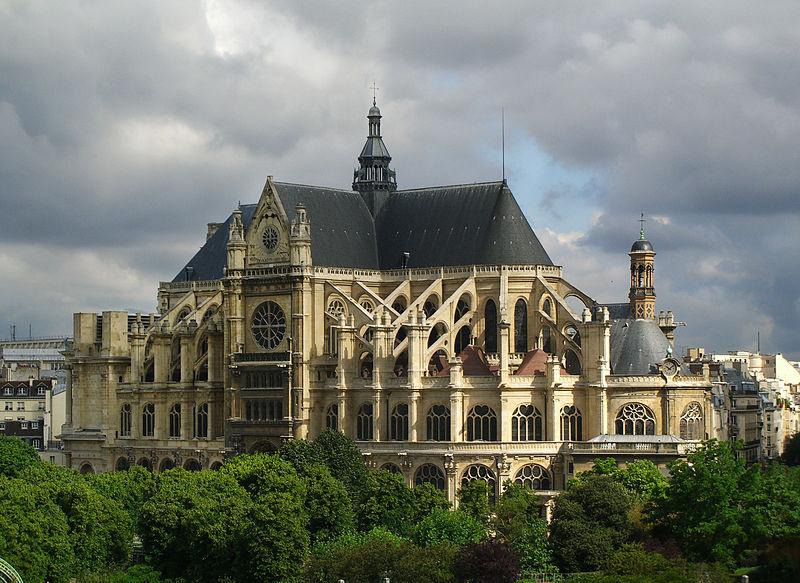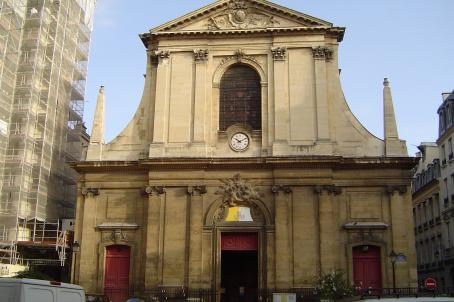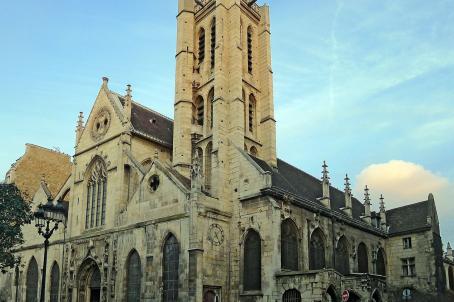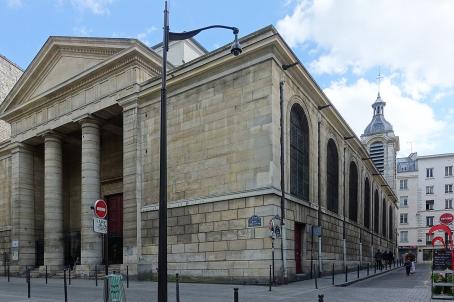Saint-Eustache's Church
The origins of the church of Saint-Eustache go back to the beginning of the 13th century. A chapel dedicated to Saint Agnes was the first building to be constructed. A crypt bearing this name is still attached to the church on the east side. In 1223, Sainte Agnès was erected as a parish and took the name of Saint-Eustache. The construction of the present church, however, only began in 1532 and lasted until 1633. The church was then partially rebuilt in 1754. Many Parisian personalities are buried in the church cemetery, among them Marie de Gournay (1565 - 1645), one of the few women to live from writing in Europe at that time. Her famous writings include "L'égalité des hommes et des femmes" (1622).






